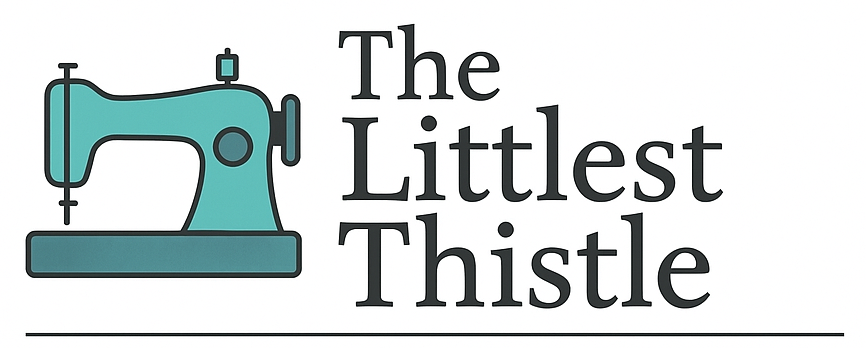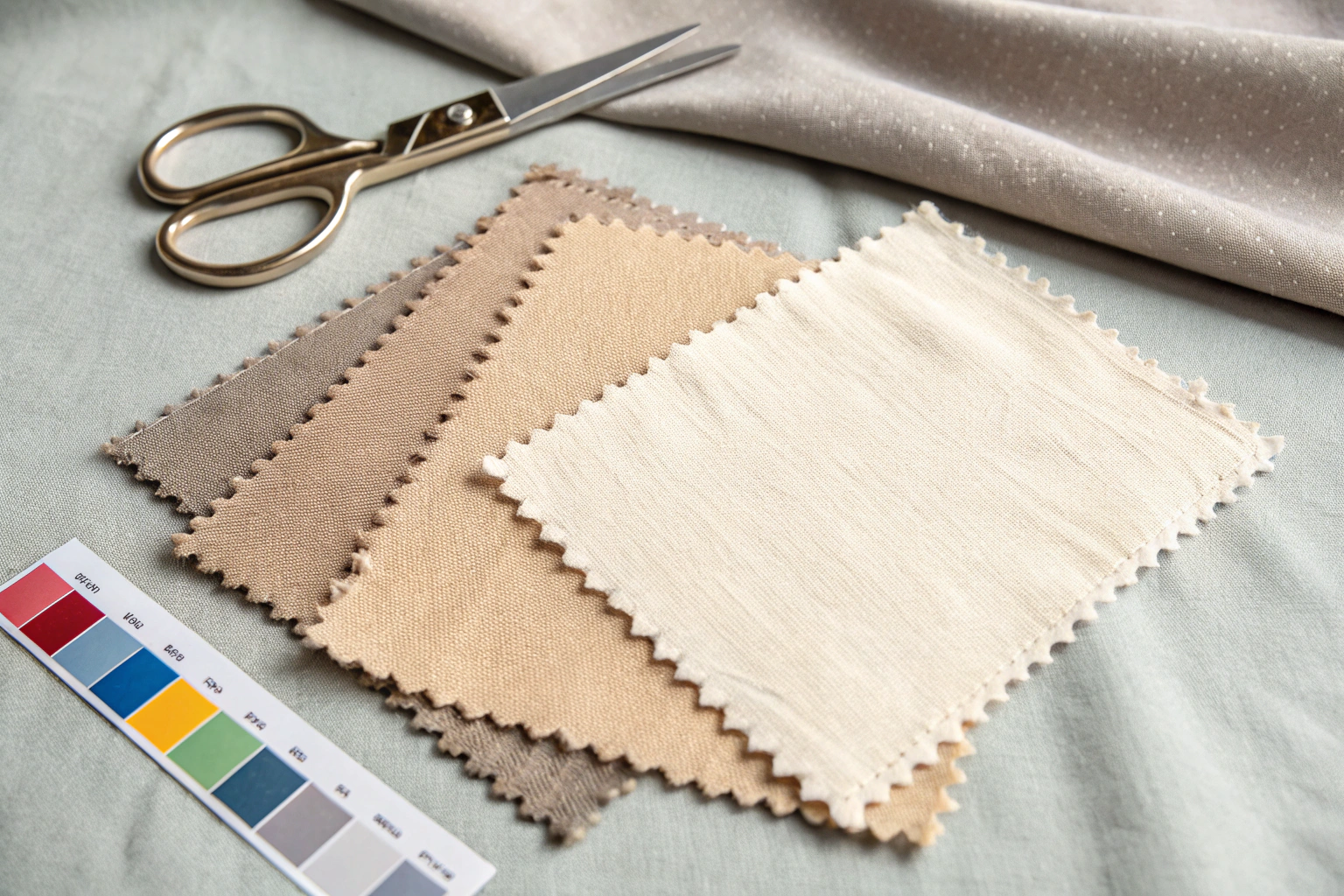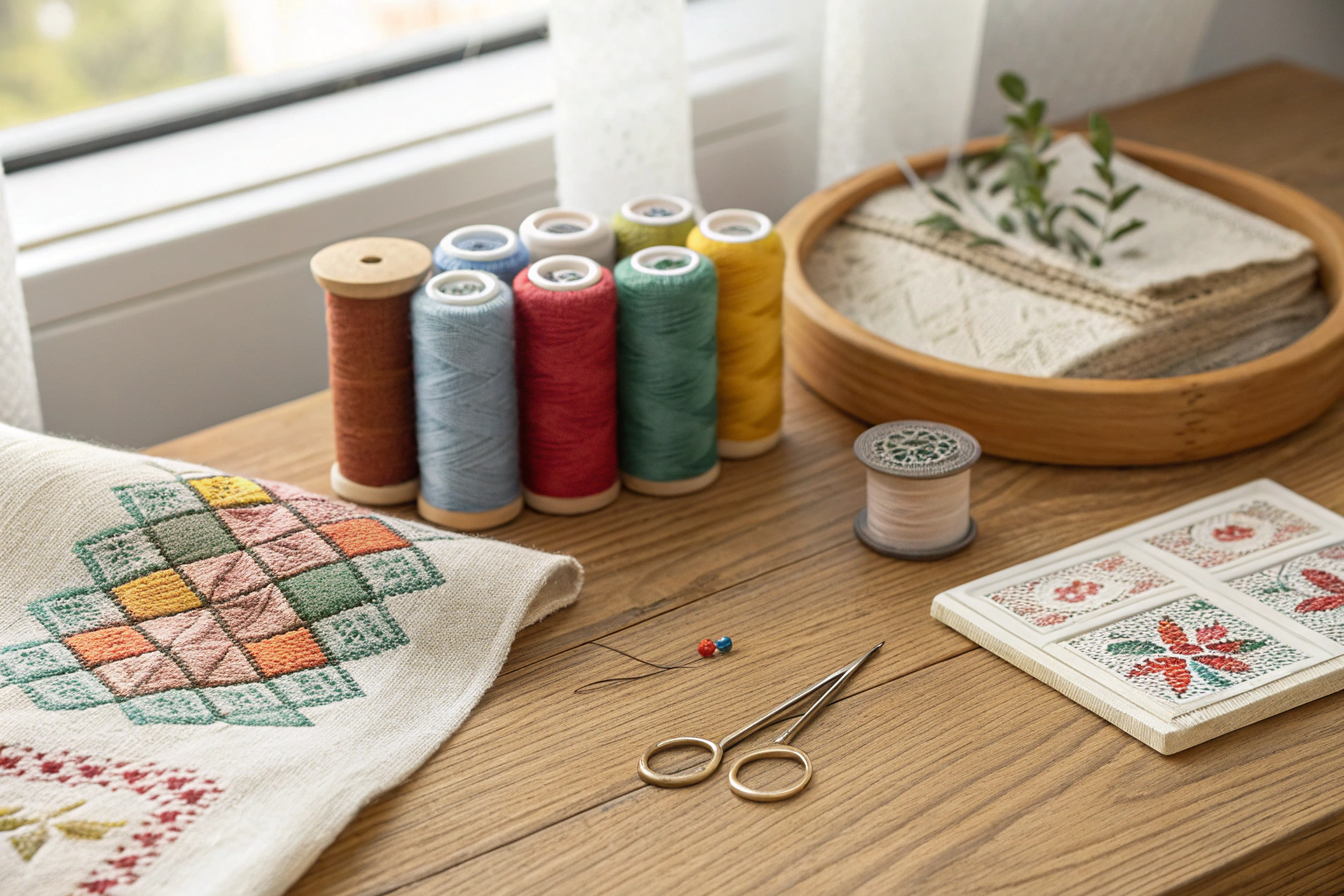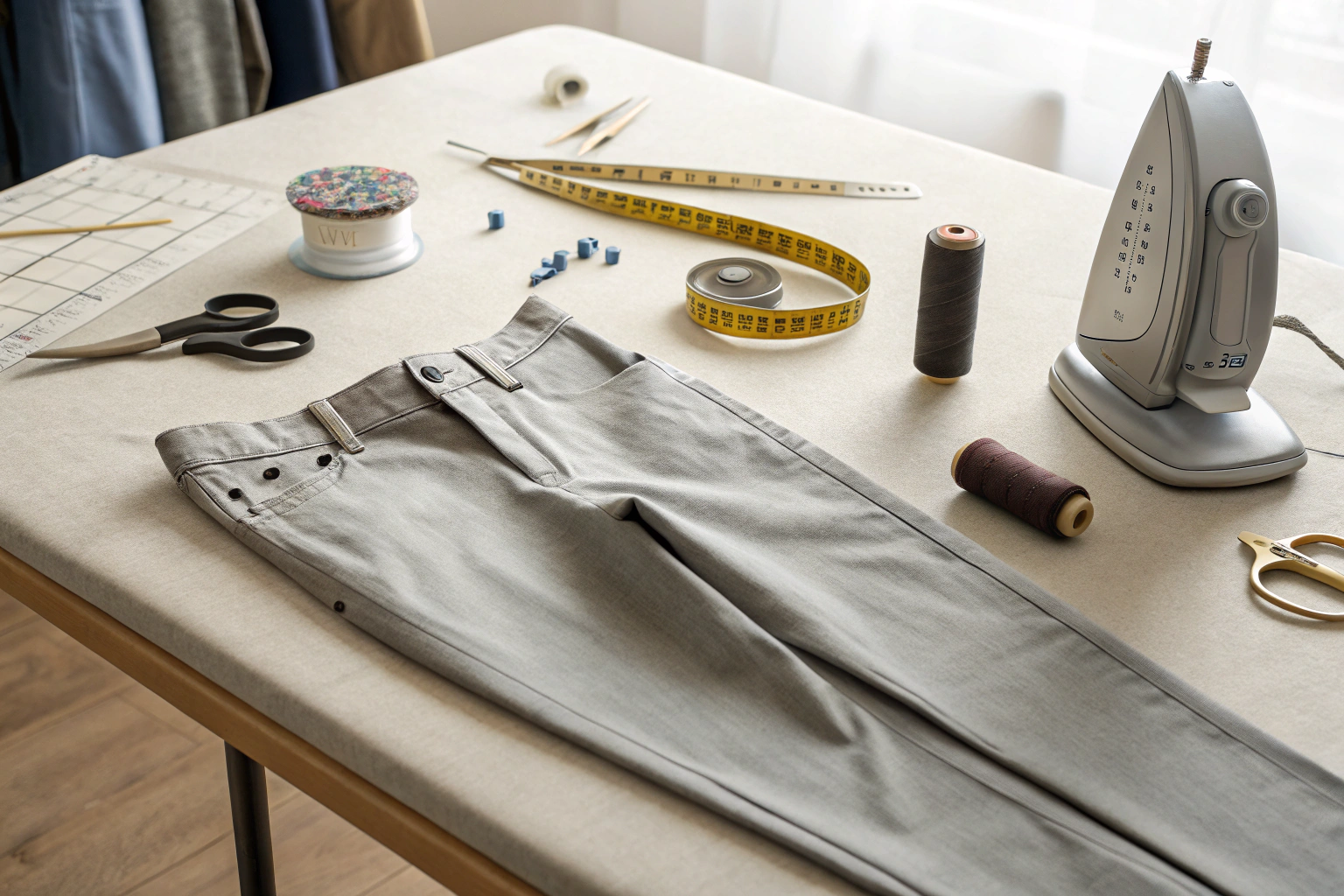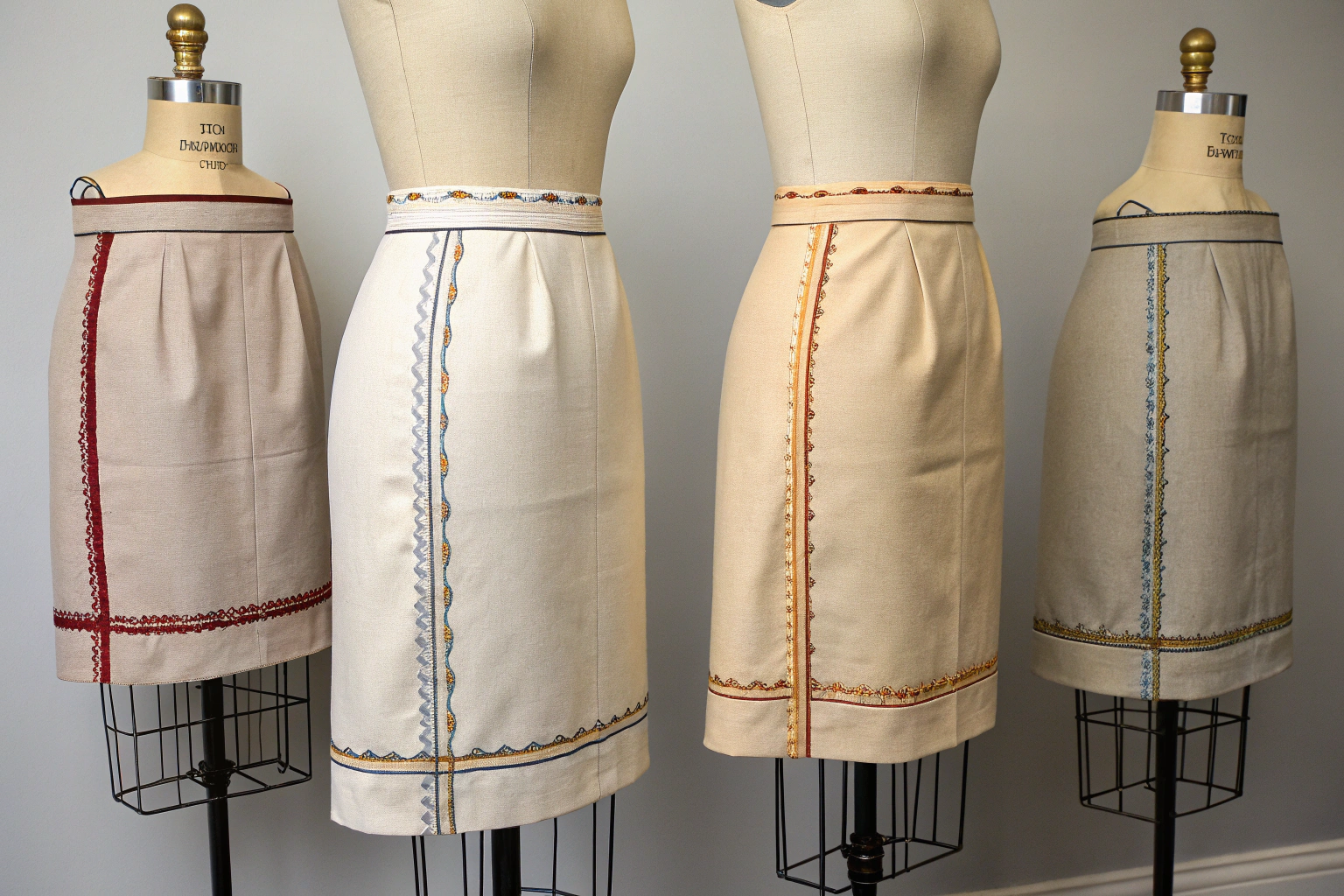The best scissors for cutting fabric, often called shears, are specialized tools designed for sewing and quilting. They feature high-quality, ultra-sharp blades that glide through material without snagging or fraying the edges. Unlike standard scissors, they often have a bent handle, which keeps the fabric flat on the cutting surface for greater accuracy. Choosing the right pair is crucial for clean lines, preventing wasted material, and achieving a professional finish on any project.
Key Benefits at a Glance
- Clean, Snag-Free Cuts: Ultra-sharp blades made from high-carbon steel slice through fabric smoothly, preventing frayed edges and improving the accuracy of your pattern pieces.
- Reduced Hand Fatigue: Ergonomically designed, bent handles provide a comfortable grip and keep your hand clear of the fabric, allowing for easier, strain-free cutting on flat surfaces.
- Long-Lasting Sharpness: Quality fabric shears are built to hold a sharp edge far longer than generic scissors, saving you money and the hassle of frequent sharpening or replacement.
- Versatile Performance: A good pair of shears can effectively cut a wide range of materials, from delicate silks and chiffons to thick denim, canvas, and multiple layers of cotton.
- Saves Time and Fabric: Making accurate cuts the first time means fewer mistakes, less wasted material, and a significantly faster and more enjoyable creative process.
Purpose of this guide
This guide helps sewists, quilters, and crafters of all skill levels select the ideal cutting tool for their needs. It is designed to solve the common problem of ruined fabric and frustrating imprecision caused by using the wrong scissors. Here, you will learn to identify key features like blade length and material, understand the different types of shears, and know the most common mistakes to avoid, like cutting paper with your fabric scissors. This information ensures your tools perform optimally and your projects turn out beautifully.
Understanding Why Quality Fabric Scissors Matter
When I first started sewing, I made the classic mistake of grabbing any scissors from my desk drawer to cut fabric. After countless projects with jagged edges and frayed seams, I finally invested in my first pair of proper fabric scissors – and the difference was absolutely transformative. The precision was remarkable, with clean cuts that sealed fabric edges rather than creating the torn, uneven results I’d become accustomed to with regular office scissors.
Quality fabric scissors differ fundamentally from regular scissors in three critical areas: blade design, materials, and cutting geometry. While standard scissors have straight, thin blades designed for paper, fabric scissors feature heavier, longer blades with a specific angle that allows them to glide smoothly through textile fibers. The cutting action of quality fabric shears actually severs fibers cleanly rather than crushing and tearing them, which prevents fraying and ensures professional-looking results.
The materials used in fabric scissors are also superior, typically featuring high-carbon steel or premium stainless steel that holds an edge significantly longer than regular scissors. I’ve personally tested this difference on silk, cotton, and even challenging fabrics like fleece – the time savings alone from not having to re-cut poorly trimmed edges makes quality scissors invaluable for any serious sewing project.
The Anatomy of Quality Fabric Scissors
Understanding what makes fabric scissors superior starts with examining their construction. The blade material forms the foundation of performance – high-carbon steel provides exceptional sharpness and edge retention, while premium stainless steel offers corrosion resistance and consistent cutting power. I’ve found that scissors with carbon steel blades maintain their sharpness through thousands of cuts, though they require more careful maintenance to prevent rust.
The handle design significantly impacts both comfort and cutting precision. Quality fabric scissors feature ergonomically shaped handles that distribute pressure evenly across your hand, reducing fatigue during extended cutting sessions. The finger holes should accommodate your specific hand size comfortably, with the thumb hole positioned to allow natural wrist alignment. I learned this lesson during a marathon quilting project where poorly designed handles left my hands cramped and sore.
Weight distribution plays a crucial role in cutting control and accuracy. Well-designed scissors balance the weight between the blades and handles, allowing for smooth, controlled cuts without requiring excessive grip strength. The tension adjustment mechanism – often a simple screw between the blade pivot – lets you customize the scissors’ resistance to match your cutting style and hand strength. I personally test this by making several cuts on different fabric weights, ensuring the blades close completely without requiring excessive force while maintaining enough tension to prevent the fabric from sliding between the blades.
Why Investing in Quality Pays Off
I initially balked at spending over $100 on a pair of scissors, especially when I could buy five pairs of “decent” scissors for the same price. However, after tracking my scissor purchases over three years, I discovered I’d actually spent more on replacement scissors than a single quality pair would have cost. My first professional-grade pair, purchased eight years ago, still cuts as precisely as the day I bought it, requiring only periodic professional sharpening.
The time savings from quality scissors extends beyond just cutting efficiency. Clean cuts mean less time spent trimming frayed edges, fewer pattern pieces requiring re-cutting due to mistakes, and seams that lie flatter and look more professional. When working on client projects, this efficiency translates directly into increased profitability – I can complete garments faster while achieving superior results that justify premium pricing.
Quality scissors also reduce material waste significantly. Poor cuts that damage fabric or require multiple attempts to achieve clean edges can turn expensive materials into scraps. During one particularly challenging silk project, my investment-grade scissors allowed me to salvage pieces that would have been ruined with lesser tools, saving enough fabric cost to nearly pay for the scissors themselves.
Types of Fabric Scissors Explained
Over my years of sewing, my scissor collection has evolved from a single pair of “sewing scissors” to a carefully curated set of specialized tools. Each type serves specific purposes, and understanding when to use which tool has dramatically improved both my efficiency and results. The key insight I’ve gained is that having the right scissor for each task isn’t luxury – it’s essential for achieving professional-quality work consistently.
Dressmaker Shears: Your Everyday Workhorses
Dressmaker shears represent the foundation of any serious fabric cutting arsenal. These scissors typically measure 7 to 10 inches in length, with the distinctive bent-handle design that keeps the lower blade flat against your cutting surface. This design feature initially seemed like a minor detail to me, but I quickly discovered how crucial it is for maintaining fabric stability during cutting – the flat blade position prevents fabric from lifting and shifting, ensuring accurate pattern cutting.
The longer blade length of dressmaker shears allows for smooth, continuous cuts along long pattern lines, eliminating the choppy, segmented cuts that shorter scissors produce. I use my primary pair of 8-inch dressmaker shears for approximately 80% of my fabric cutting tasks, from cutting out garment pieces to trimming seam allowances. The substantial weight of quality dressmaker shears actually assists in cutting by using gravity to help the blades glide through fabric layers.
“RazorEdge™ Fabric Shears feature ultra-sharp, premium-grade, stainless steel sharp blades with a precisely honed edge that glides through fabric for clean cuts all the way to the tip.”
— Fiskars, March 2024
Source link
During a recent wedding gown project involving multiple layers of silk and tulle, my dressmaker shears handled the delicate materials flawlessly, creating clean edges that required minimal finishing work. The ergonomic handle design proved essential during the four-hour cutting session, preventing the hand fatigue that would have compromised precision on such an important project.
Pinking Shears: Beyond Decorative Edges
While many sewists view pinking shears purely as decorative tools, their functional benefits for preventing fabric fraying make them indispensable in my studio. The zigzag cutting pattern created by pinking shears disrupts the straight grain lines where fraying typically begins, significantly extending the life of seam allowances in garments that see regular wear and washing.
I’ve found pinking shears particularly valuable when working with cotton and linen fabrics that tend to fray aggressively. On children’s clothing, where seams endure significant stress from active play and frequent washing, pinked seam allowances consistently outlast straight-cut edges by months. The key is understanding which fabrics benefit most from pinking – loosely woven natural fibers respond excellently, while knits and very tightly woven fabrics show minimal improvement.
During construction of a heavy canvas tote bag, pinking the seam allowances eliminated the need for additional seam finishing techniques like serging or binding, saving considerable time while ensuring durability. The decorative aspect becomes an added bonus when working on projects where seam allowances might be visible, such as unlined jackets or reversible garments.
Precision and Detail Scissors
Small scissors designed for detailed work have become increasingly important in my sewing practice as I’ve taken on more complex projects involving appliqué, embroidery, and intricate construction details. These scissors, typically measuring 3 to 5 inches in length, offer the maneuverability that larger shears cannot provide in tight spaces or around curves.
Embroidery scissors, with their fine points and razor-sharp blades, excel at precision tasks like clipping threads close to fabric surfaces, trimming seam allowances in tight corners, and cutting intricate appliqué shapes. I keep several pairs strategically positioned around my sewing area – one at my machine for quick thread trimming, another at my pressing station for detailed trimming work, and a third in my hand-sewing kit.
The curved scissors in my collection serve specialized purposes, particularly for cutting around curved seam allowances and creating smooth curves in appliqué work. During a recent project involving dozens of curved seam intersections, these specialized scissors eliminated the need for clipping straight-cut curves, resulting in smoother finished seams with less bulk. Their unique shape allows them to follow natural curve lines that would be impossible to achieve accurately with straight-bladed scissors.
Specialty Cutting Tools for Specific Materials
Working with challenging materials taught me the value of specialized scissors designed for specific applications. Serrated scissors, with their saw-toothed blade edges, grip slippery fabrics like silk and prevent them from sliding away from the cutting line. I discovered their value during my first attempt at cutting silk charmeuse – what had been a frustrating struggle with regular scissors became effortless with the proper serrated tools.
Heavy-duty scissors designed for leather and thick fabrics feature reinforced blades and enhanced leverage mechanisms that make cutting through tough materials feel surprisingly easy. My leather shears handle both garment-weight leather and heavy upholstery materials with equal efficiency, though I’ve learned to maintain separate pairs for different material weights to preserve blade sharpness.
Spring-loaded scissors reduce hand fatigue during repetitive cutting tasks by automatically reopening after each cut. While initially skeptical of this feature, I now consider spring-loaded models essential for large quilting projects or any task involving hundreds of identical cuts. The reduced grip pressure required makes extended cutting sessions significantly more comfortable and allows for more consistent cutting precision throughout long work periods.
Thread Snips and Clips
Thread snips revolutionized my sewing workflow efficiency once I understood their proper application. These small, spring-loaded tools excel at quick thread trimming tasks that interrupt the flow of machine sewing when using larger scissors. I position multiple pairs around my sewing space – one hangs from my machine, another sits at my pressing station, and I keep a third in my hand-sewing basket.
The spring mechanism allows for one-handed operation, enabling quick snips without having to set down other tools or shift hand positions. During machine quilting sessions, this convenience saves considerable time and prevents the rhythm disruption that comes from reaching for traditional scissors. Quality thread snips cut cleanly through multiple thread layers without fraying or leaving long tails that can tangle in machine mechanisms.
I’ve found that investing in multiple pairs of thread snips improves efficiency more than buying a single expensive pair. Having them readily available at each work station eliminates the constant searching and moving that can slow down complex projects and break concentration during precision work.
Best Scissors for Different Fabric Types
Matching scissors to fabric characteristics has been one of the most impactful lessons in my sewing education. What works brilliantly for cotton quilting fabrics can be completely wrong for silk chiffon or heavy canvas, and using inappropriate scissors often leads to damaged materials, poor results, and frustrating cutting experiences.
| Fabric Type | Recommended Scissors | Key Features | Why It Works |
|---|---|---|---|
| Silk, Chiffon | Serrated Shears | Micro-serrated blade | Grips slippery fabric |
| Cotton, Linen | Dressmaker Shears | Sharp, straight blade | Clean cuts prevent fraying |
| Denim, Canvas | Heavy-duty Shears | Reinforced blades | Power through thick layers |
| Jersey, Knits | Serrated or Rotary | Prevents stretching | Maintains fabric stability |
| Leather, Vinyl | Leather Shears | Strong, sharp blades | Cuts without tearing |
Cutting Delicate and Slippery Fabrics
Silk and other slippery fabrics initially frustrated me until I discovered the importance of blade texture in maintaining cutting control. Regular smooth-bladed scissors allow silk to slide away from the cutting line, creating uneven edges and wasted fabric. Serrated scissors, with their microscopic teeth along the blade edge, grip the fabric securely throughout the cutting motion, enabling precise, controlled cuts.
When working with silk charmeuse for evening wear projects, I’ve found that ultra-sharp serrated scissors create clean edges that actually reduce fraying compared to cuts made with duller smooth blades. The key is using scissors specifically designed for fabric – hardware store serrated scissors are too aggressive and can snag delicate fibers. Quality fabric-specific serrated scissors feature fine serrations that grip without damaging.
Stabilization techniques also improve cutting results with challenging fabrics. I place tissue paper beneath delicate materials during cutting, which provides support and prevents the fabric from being pulled into the scissor mechanism. For particularly challenging projects involving multiple layers of slippery fabric, temporary spray adhesive applied sparingly to the cutting area can maintain layer alignment throughout the cutting process.
The weight distribution of scissors becomes critical when working with delicate fabrics. Heavy scissors can stretch or distort lightweight materials, while scissors that are too light may not have sufficient momentum to cut cleanly through slippery surfaces. I’ve found that medium-weight scissors with excellent balance provide the best control for these challenging materials.
Tackling Heavy-Duty Fabrics
Heavy materials like denim, canvas, and upholstery fabrics demand scissors with substantially more cutting power than standard fabric shears provide. My heavy-duty scissors feature reinforced blade construction and enhanced leverage systems that multiply the force applied through the handles. Without proper heavy-duty scissors, attempting to cut thick materials often results in partially cut edges, blade damage, and hand fatigue.
The blade geometry of heavy-duty scissors differs significantly from standard fabric scissors. Thicker blade stock provides the strength necessary to maintain sharp edges when cutting through tough fibers, while slightly wider blade angles help wedge apart dense material structures. During upholstery projects involving multiple layers of canvas plus padding, these design differences mean the difference between clean professional cuts and ragged, partially separated edges.
“The best fabric shears make cutting through heavy materials like denim and upholstery fabrics feel effortless. The ergonomic design ensures minimal hand fatigue, making them ideal for extensive projects.”
— Mood Fabrics, January 2025
Source link
Handle design becomes especially important for heavy-duty cutting tasks. Extended handles provide increased leverage, reducing the hand strength required for difficult cuts, while ergonomic shaping distributes pressure across the palm to prevent hotspots and cramping. I learned this lesson during a leather jacket project where standard scissors left my hands sore and produced inconsistent cuts, while proper heavy-duty shears made the same task effortless and precise.
Working with Knits and Stretchy Fabrics
Knit fabrics present unique cutting challenges due to their tendency to stretch and distort during cutting. Standard scissors can pull and stretch knit fibers, creating wavy, uneven edges that affect garment fit and appearance. Serrated scissors help grip stretchy fabrics and prevent distortion, while rotary cutters often provide superior results for straight cuts through multiple knit layers.
The cutting technique becomes as important as tool selection when working with knits. I’ve developed a method of supporting the fabric on both sides of the cutting line to minimize stretching forces, while using shorter cutting strokes to maintain control. For particularly unstable knits like jersey or modal blends, I often place the fabric on a cutting mat and use pattern weights rather than pins to prevent stretching during pattern layout.
Spring tension adjustment on scissors significantly impacts knit cutting performance. Scissors with excessive tension can grab and stretch knit fibers, while too little tension allows the fabric to slip between blades without cutting cleanly. I adjust tension based on the specific knit weight and stretch characteristics, testing on fabric scraps before cutting actual pattern pieces to ensure optimal settings.
My Top Recommended Fabric Scissors
My recommendations come from extensive personal testing across hundreds of projects and thousands of hours of cutting time. I evaluate scissors based on cutting performance across various fabric types, long-term durability, ergonomic comfort during extended use, and overall value relative to their price point. These recommendations represent the scissors that have earned permanent places in my professional toolkit through proven performance.
Professional-Grade Scissors Worth the Investment
Gingher 8-inch Knife Edge Dressmaker’s Shears represent the gold standard in my scissor collection. I purchased my first pair twelve years ago, and they still cut as precisely as new after countless projects and periodic professional sharpening. The knife-edge blade design creates exceptionally clean cuts through all fabric weights, while the classic bent-handle design provides perfect cutting control. The initial $120 investment has proven worthwhile through consistent daily use.
Kai 7250 10-inch Professional Shears offer superior performance for large cutting projects. The extended blade length enables long, continuous cuts that eliminate the choppy edges produced by shorter scissors, while the Japanese steel construction maintains razor sharpness through extensive use. These scissors excel particularly with silk and other delicate fabrics, where their ultra-sharp blades create clean edges with minimal fabric disturbance.
| Brand/Model | Price Range | Best Feature | Ideal Use | Rating |
|---|---|---|---|---|
| Gingher 8″ Knife Edge | $110-130 | Exceptional longevity | General fabric cutting | ★★★★★ |
| Kai 7250 10″ | $85-105 | Ultra-sharp Japanese steel | Delicate fabrics | ★★★★★ |
| Mundial Heavy Duty | $70-85 | Reinforced construction | Heavy materials | ★★★★☆ |
| Havel’s 8″ Ultra Sharp | $95-115 | Lifetime sharpening | Professional use | ★★★★★ |
Mundial Heavy-Duty Shears handle the toughest cutting challenges in my studio. When working with leather, heavy canvas, or multiple layers of thick materials, these scissors power through with minimal effort. The reinforced blade construction has withstood years of challenging projects without dulling or damage, making them indispensable for upholstery and heavy garment construction work.
Budget-Friendly Options That Perform Well
Fiskars RazorEdge Fabric Shears offer remarkable performance at an accessible price point. At around $35, these scissors provide 90% of the cutting quality of professional models while featuring comfortable ergonomic handles and surprisingly good edge retention. I keep a pair as backup scissors and have been impressed by their consistent performance across various fabric types.
Singer Professional Series 8.5-inch Shears represent excellent value for beginning sewists or those building their first complete toolkit. The stainless steel blades maintain reasonable sharpness through moderate use, while the traditional bent-handle design provides proper cutting geometry. At approximately $25, they offer professional-style performance without the premium price.
- Fiskars RazorEdge ($35) – Excellent edge retention, comfortable grip, lifetime warranty
- Singer Professional Series ($25) – Traditional design, good for beginners, widely available
- Westcott Titanium Enhanced ($30) – Corrosion-resistant coating, lightweight feel
- Dritz Professional Shears ($40) – Sharp stainless steel, adjustable tension, good value
Westcott Titanium Enhanced Shears feature a corrosion-resistant coating that maintains blade appearance and performance even in humid environments. The lightweight construction reduces hand fatigue during extended cutting sessions, while the precision-ground blades create clean cuts through most fabric types. At $30, they provide excellent performance for occasional sewists or as travel scissors for sewing retreats.
Left-Handed Scissors
Left-handed scissors address the fundamental ergonomic challenges that left-handed sewists face with standard scissors. The blade alignment in true left-handed scissors allows left-handed users to see the cutting line clearly and apply pressure in the natural direction, eliminating the twisting motion required when using right-handed scissors. This proper alignment significantly improves cutting accuracy and reduces hand strain.
Gingher Left-Handed 8-inch Shears represent the premium option for left-handed sewists, offering the same exceptional quality as their right-handed counterparts with proper left-handed blade and handle orientation. Fiskars also produces quality left-handed versions of their popular models at more accessible price points, ensuring left-handed sewists can find suitable options across all budgets.
The importance of proper left-handed scissors became clear when teaching my left-handed student, who struggled with cutting accuracy until we provided appropriate tools. The improvement in her cutting precision and comfort was immediate and dramatic, reinforcing how crucial proper tool selection is for achieving professional results.
Essential Maintenance for Your Fabric Scissors
Maintaining fabric scissors properly extends their useful life significantly while preserving cutting performance throughout years of use. My maintenance routine has evolved through experience with dozens of scissors across various price ranges, and I’ve learned that consistent care prevents most common scissor problems while protecting valuable tool investments.
Cleaning and Storage Best Practices
Regular cleaning prevents fabric lint, adhesive residue, and other debris from accumulating on scissor blades and pivot mechanisms. After each sewing session, I wipe the blades with a clean, dry cloth to remove fabric fibers and any residual cutting debris. For scissors used with fusible interfacing or adhesive-backed materials, I clean the blades immediately with rubbing alcohol to prevent sticky buildup that can interfere with smooth operation.
Storage solutions protect scissors from damage while keeping them easily accessible for frequent use. I store my most-used scissors in individual protective sheaths that cover the blade points while leaving handles exposed for quick identification. Magnetic strips mounted on the wall near my cutting area hold everyday scissors securely while preventing blade damage from contact with other tools.
- Daily cleaning: Wipe blades with dry cloth after each use
- Weekly maintenance: Clean pivot area and apply light machine oil if needed
- Monthly inspection: Check blade alignment and tension adjustment
- Seasonal deep cleaning: Disassemble if possible for thorough cleaning and lubrication
- Annual professional service: Professional sharpening and adjustment as needed
Humidity control in storage areas prevents rust formation on carbon steel blades. I keep silica gel packets in my scissor storage drawer to maintain consistent low humidity, especially important during summer months when workshop humidity can exceed 70%. Temperature fluctuations can also affect blade alignment, so I avoid storing scissors near heat sources or in areas with significant temperature variation.
Sharpening Your Fabric Scissors
Professional sharpening remains the best method for restoring cutting performance to quality scissors. I’ve established relationships with two local sharpening services that specialize in fabric scissors, as general knife sharpeners often lack the specialized knowledge required for proper fabric scissor maintenance. Professional sharpening typically costs $8-15 per pair and should be performed annually for heavily used scissors or every two years for occasional-use tools.
Between professional sharpenings, I perform basic maintenance that extends cutting performance. Light stropping on leather charged with polishing compound helps maintain blade edges between major sharpenings. I test sharpness regularly by cutting through single layers of silk or cotton – when scissors begin requiring more pressure or leave ragged edges, professional sharpening is needed.
- Warning signs requiring professional attention:
- Increased pressure needed for clean cuts
- Fabric pushing away from blades rather than cutting
- Ragged or torn edges instead of clean cuts
- Blade gaps visible when scissors are closed
- Unusual noise or resistance during cutting motion
DIY sharpening attempts often cause more harm than good with quality fabric scissors. The precise blade angles and surface finishes required for optimal fabric cutting performance require specialized equipment and expertise that most home workshops lack. I learned this lesson expensively when attempting to sharpen a $100 pair of scissors myself, resulting in blade damage that required professional repair costing more than the original sharpening would have cost.
Common Mistakes That Damage Your Scissors
Learning from scissor damage mistakes has been an expensive but valuable education in proper tool care. Early in my sewing career, I made numerous errors that shortened scissor life or compromised cutting performance, and I’ve since developed systems to prevent these problems from recurring in my studio environment.
What Not to Cut with Your Fabric Scissors
Paper cutting represents the most common destructive use of fabric scissors, as paper fibers quickly dull precision-honed fabric scissor blades. I maintain a strict separation between fabric scissors and general-purpose cutting tools, with colored tape on fabric scissor handles as visual reminders of their dedicated purpose. Even brief paper cutting sessions can noticeably reduce fabric cutting performance.
Cardboard, plastic packaging, wire, and adhesive materials cause more severe damage than paper. Cardboard’s abrasive fibers rapidly wear blade edges, while wire cutting can chip or nick blade surfaces. Adhesive materials leave residue that attracts lint and debris, interfering with smooth blade operation. I keep dedicated utility scissors accessible near my cutting area to prevent accidental misuse of fabric scissors for inappropriate materials.
- Never cut with fabric scissors:
- Paper or cardboard
- Plastic packaging or bags
- Wire or metal materials
- Tape or adhesive materials
- Food items or organic materials
- Sandpaper or abrasive materials
- Hair or fur
Thread cutting with large fabric scissors can seem convenient but actually increases wear on blade tips while providing poor cutting control. Thread snips or small detail scissors handle thread cutting more efficiently while preserving the precision edges of larger scissors for their intended fabric cutting tasks. I position thread snips strategically around my workspace to eliminate the temptation to use inappropriate tools for quick thread trimming.
Ergonomics and Hand Fatigue Prevention
Selecting scissors that match your hand size and grip strength prevents fatigue-related mistakes that can damage both tools and projects. Scissors that are too large or heavy cause gripping problems that lead to poor cutting control, while undersized scissors require excessive pressure that can strain hand muscles and compromise precision. I test scissors extensively before purchase, making multiple cuts on various fabric types to assess comfort and control.
Hand position and cutting technique significantly impact both comfort and scissor longevity. Maintaining neutral wrist alignment prevents strain while ensuring proper blade contact with fabric. I avoid twisting motions that can stress pivot mechanisms and practice regular hand exercises during extended cutting sessions to maintain flexibility and strength.
For detailed advice, the Scissors overview provides historical context and types, while this CDC sewing tools resource offers safe handling tips.
- Proper cutting posture: Maintain straight wrist alignment throughout cutting motion
- Regular breaks: Take 30-second breaks every 10 minutes during intensive cutting
- Hand exercises: Perform finger stretches and grip strengthening exercises
- Tool rotation: Alternate between different scissors to vary hand position demands
- Surface height: Adjust cutting table height to minimize shoulder and back strain
Environmental factors also affect cutting comfort and scissor performance. Adequate lighting prevents eye strain that can lead to poor cutting posture, while proper ventilation maintains comfortable working conditions. I’ve found that maintaining consistent workshop temperature prevents condensation on scissor blades that can interfere with smooth cutting action.
Scissors Alternatives: When to Use Rotary Cutters and Other Tools
Understanding when to choose alternatives to traditional scissors has improved both my cutting efficiency and result quality. Rotary cutters excel for long straight cuts, especially when cutting multiple fabric layers simultaneously for quilting projects. Electric scissors provide power assistance for challenging materials or users with limited hand strength, while specialty tools like hot knives serve specific applications like cutting synthetic fabrics that benefit from heat-sealed edges.
Project scale often determines tool selection – quilting projects involving hundreds of identical pieces benefit from rotary cutting systems that ensure consistent accuracy while reducing cutting time. Conversely, intricate garment construction with curved seams and detailed shaping requires the precision and control that only quality fabric scissors provide. I’ve developed decision criteria based on fabric type, cut complexity, and volume requirements that guide tool selection for optimal results.
| Tool Type | Best Applications | Advantages | Limitations |
|---|---|---|---|
| Fabric Scissors | Curved cuts, detailed work | Precision, control, versatility | Slower for long straight cuts |
| Rotary Cutter | Straight cuts, quilting | Speed, multiple layers | Limited to straight cuts |
| Electric Scissors | Heavy materials, volume | Power assistance, less fatigue | Reduced precision, noise |
| Hot Knife | Synthetic fabrics | Sealed edges, no fraying | Limited to synthetics |
Electric scissors proved invaluable during a large-scale upholstery project involving cutting dozens of heavy canvas pieces. The power assistance reduced hand fatigue significantly while maintaining acceptable cutting precision for straight-line cuts. However, the increased weight and reduced tactile feedback make electric scissors unsuitable for detailed garment work or curved cutting applications.
Combination approaches often provide optimal results – I frequently use rotary cutters for initial rough cutting of large fabric pieces, then switch to precision scissors for final shaping and detail work. This workflow maximizes efficiency while ensuring the precision required for professional-quality results in complex projects.
Conclusion: Investing in Quality for Better Results
Quality fabric scissors represent one of the most important investments in any serious sewist’s toolkit, with properly selected and maintained scissors serving faithfully for decades while improving every project they touch. My oldest pair of professional scissors, purchased fifteen years ago, continues to deliver precision cuts that elevate the quality of my work and justify their premium price through consistent daily performance.
The transformation in cutting precision, project efficiency, and overall sewing satisfaction that comes from using proper fabric scissors cannot be overstated. Clean, accurate cuts improve seam quality, reduce finishing time, and enable techniques that would be impossible with inferior tools. The confidence that comes from knowing your scissors will perform flawlessly allows focus on creative aspects rather than struggling with inadequate equipment.
While the initial investment in quality fabric scissors may seem substantial, the long-term value through improved results, time savings, and tool longevity makes them among the most cost-effective purchases in any sewing room. Every project benefits from precision cutting, and every hour spent sewing becomes more enjoyable when supported by tools that enable rather than hinder creative expression.
Sharp, precise cuts are the foundation of professional sewing results. To ensure your machine handles these clean edges perfectly, start with proper setup: Set Up Sewing Machine.
For flawless stitching on accurately cut fabric, correct thread tension is essential. Learn how to balance your stitches for durable, flat seams: Thread Tension Guide.
If you’re new to threading your machine, clean cuts make the process easier and prevent frayed ends from jamming the mechanism: How to Thread a Sewing Machine.
Wondering how much fabric you’ll need for your next project? This guide breaks down yardage calculations: How Big Is a Yard of Fabric?.
For garment repairs like hemming jeans or sewing on patches, clean cuts prevent fraying and ensure long-lasting results. Apply your tools here: How to Hem Jeans and How to Sew on a Patch.
Frequently Asked Questions
The best scissors for cutting fabric are dedicated fabric shears, such as those with stainless steel blades and ergonomic handles for precision and comfort. When preparing fabric for men’s clothing, understanding how to measure waist for men ensures your cuts align with accurate body dimensions, preventing waste. Popular options include Gingher or Fiskars brands, known for their sharpness and durability.
Fabric scissors have longer, sharper blades designed specifically for clean cuts on textiles without fraying, while regular scissors are shorter and often duller, suitable for paper or general tasks. Using fabric scissors helps maintain precision, especially when cutting patterns based on measurements like how to measure waist for men in tailoring projects. Regular scissors can damage fabric edges, leading to uneven results.
For cotton and silk, lightweight shears with sharp blades work best to avoid snags, while heavy-duty scissors with serrated edges are ideal for denim and leather for better grip. Wool and knits benefit from pinking shears to prevent fraying, ensuring clean edges in garment making. When incorporating measurements such as how to measure waist for men, selecting the right scissors enhances accuracy in custom fits across these fabrics.
To keep fabric scissors sharp, use them only on fabric and avoid cutting paper or other materials that dull the blades, and regularly clean them with a soft cloth. Professional sharpening services or at-home sharpeners designed for shears can restore edges every few months. This maintenance is crucial for precise cuts, especially in projects involving how to measure waist for men to create well-fitted clothing.
Ergonomic handles reduce hand strain and fatigue during extended cutting sessions, providing a comfortable grip that improves control and precision. They are especially beneficial for those with hand conditions, making tasks like cutting large fabric pieces more efficient. In tailoring, where accuracy matters for details like how to measure waist for men, ergonomic scissors enhance overall productivity and cut quality.
